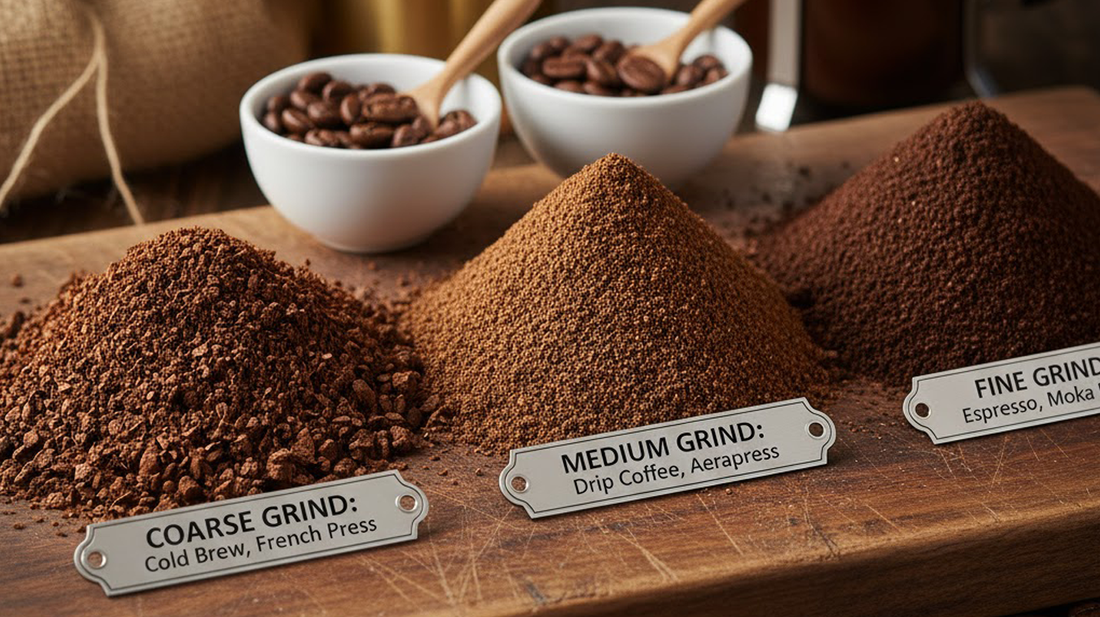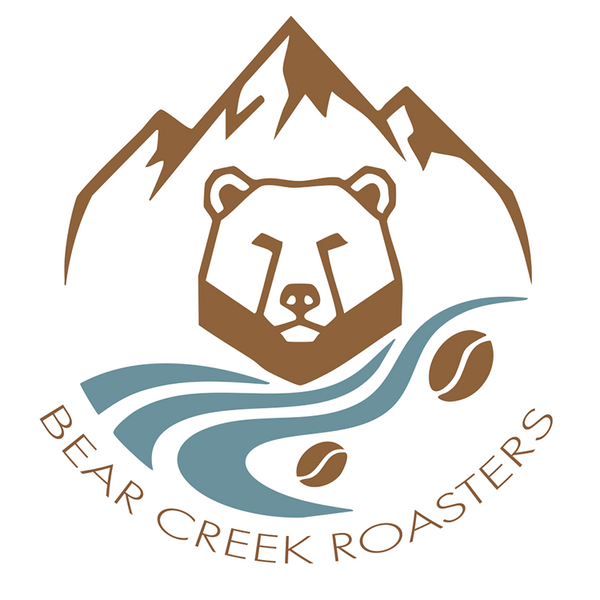
The Ultimate Guide to Coffee Grind Sizes (and Why Yours Matters)
There's a secret weapon in your quest for the perfect cup of coffee, and it has nothing to do with fancy machines or exotic beans (though we love those too!). It's all about the grind. Yes, the size of your coffee grounds might seem like a minor detail, but it's a critical factor that can make or break your brew.
At Bear Creek Roasters, we're passionate about helping you unlock the full potential of every bean. Understanding grind size is a game-changer, especially if you're looking to master everything from a delicate pour-over to a robust cold brew coffee.
Why Grind Size is Your Coffee's Best Friend (or Worst Enemy)
Think of coffee extraction like a conversation. If your coffee grounds are too coarse, they're like shy guests at a party – they don't give up their flavors easily, resulting in an under-extracted, weak, and sour cup. Too fine, and they're like overly enthusiastic guests – they release all their flavors too quickly, leading to an over-extracted, bitter, and harsh brew.
The goal is to hit that "sweet spot" where the water can efficiently and evenly extract all the delicious compounds from the coffee, leaving behind the bitter ones. This perfect extraction is key to a balanced, flavorful cup.
The Grind Size Spectrum: A Bear Creek Roasters Breakdown
Let's dive into the different grind sizes and what brewing methods they're best suited for.
1. Coarse Grind: Think Sea Salt
- Appearance: Distinct, large particles, similar to coarse sea salt.
- Best For: French Press, percolators, and most importantly for a smooth, less acidic experience: Cold Brew Coffee.
- Why it Matters: Cold brew involves a long steeping time (12-24 hours) with cold water. A coarse grind prevents over-extraction and bitterness during this extended period, resulting in a naturally sweet and less acidic concentrate. For a truly exceptional cold brew, we highly recommend our Dark Roast Collection for a rich, bold flavor, or our Single Origin Guatemala for a nuanced, chocolatey profile.
2. Medium-Coarse Grind: Rough Sand
- Appearance: Resembles rough sand.
- Best For: Chemex and Clever Dripper.
- Why it Matters: This grind allows for a slightly faster flow rate than a coarse grind, suitable for brewing methods that aim for a clean cup with good body.
3. Medium Grind: Regular Sand
- Appearance: Similar to regular beach sand.
- Best For: Drip coffee makers (the kind you probably have on your counter) and pour-overs.
- Why it Matters: This is the most common grind size and offers a good balance for everyday brewing, allowing for efficient extraction without over-saturating the filter. Our Bear Creek Blend is a perfect choice for your daily drip!
4. Medium-Fine Grind: Finer Sand
- Appearance: A bit finer than regular sand, but not powdery.
- Best For: Aeropress (with a shorter steep time) and siphon brewers.
- Why it Matters: This grind allows for quicker extraction due to increased surface area, ideal for brewing methods with shorter contact times.
5. Fine Grind: Table Salt
- Appearance: Smooth to the touch, like table salt or fine sugar.
- Best For: Espresso, Moka Pot.
- Why it Matters: Espresso machines use high pressure and very short contact times (around 20-30 seconds). A fine grind is essential to allow the water to extract enough flavor in that brief window. Trying to make espresso with a coarse grind will result in a watery, under-extracted shot. For a fantastic espresso experience, explore our Bear Creek Espresso blend, crafted for rich crema and intense flavor.
6. Extra Fine/Turkish Grind: Powdered Sugar
- Appearance: Extremely fine, like powdered sugar or flour.
- Best For: Turkish coffee.
- Why it Matters: This is the finest grind possible, designed for a brewing method where the coffee grounds are left in the cup and consumed with the liquid.
The Takeaway: Experiment and Enjoy!
The beauty of coffee is in its endless possibilities. While these guidelines are a great starting point, don't be afraid to experiment! Your perfect cup is a journey of discovery.
Invest in a good quality burr grinder if you can. It provides a more consistent grind than blade grinders, which "chop" the beans unevenly, leading to inconsistent extraction.
Whether you're crafting the ultimate cold brew coffee for a hot summer day or a rich espresso to kickstart your morning, understanding grind size is your key to unlocking incredible flavor.
Happy brewing from your friends at Bear Creek Roasters! Explore our full selection of premium beans and find your perfect grind at www.bearcreekroasters.com.
